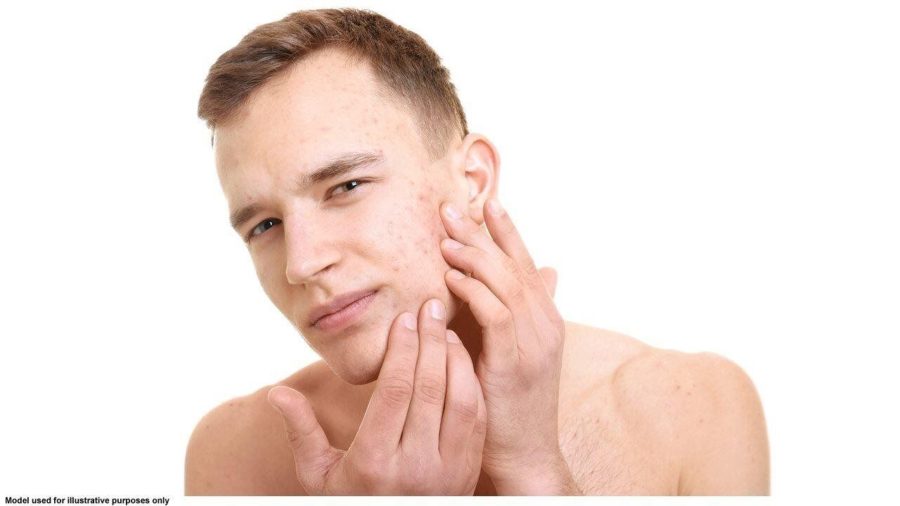Frustrated with acne? A first-of-its-kind prescription cream recently became available
March 2, 2022
(BPT) – Did you know that acne is the most prevalent skin disease, affecting up to 50 million Americans?1 If you are one of the millions of people who have “acne vulgaris,” a skin condition commonly known as “acne,” you may have already tried a number of over-the-counter (OTC) products. While some OTC products may help in cases of mild acne, more moderate cases are considered to be a medical condition that is best treated by a dermatologist. And the good news is, new topical treatments have recently become available that add more options for the many teens and adults who are living with acne.
What exactly is acne?
Acne vulgaris occurs when hair follicles become plugged with oil (sebum) and dead skin cells. The plugged follicles cause whiteheads (closed plugged pores), blackheads (open plugged pores), papules (small red, tender bumps) or pimples (pustules, which are papules with pus at their tips).2
While acne is most common among teenagers, the truth is that it can affect people at any age.2
How is acne treated?
Doctors usually choose a combination of more than one approach to treat an individual’s acne, which in some cases may also involve oral medications.2 The most commonly used acne treatments are topical prescription medications, which may fall into one of the following categories:
- Retinoids and retinoid-like drugs: Medications containing retinoic acids or tretinoin can be used to address hyperkeratinization (abnormally rapid shedding of skin cells) and inflammation. Drawbacks of topical retinoids include the fact that they can increase the skin’s sensitivity to sun, and can also cause dry skin and redness.
- Antibiotics: Topical antibiotics are mainly used to address the acne-causing bacteria, and can also reduce redness and inflammation. Generally available as a gel or foam, topical antibiotics are often combined with benzoyl peroxide to reduce the probability of developing antibiotic resistance.
- Azelaic acid and salicylic acid: A naturally occurring acid produced by a yeast, azelaic acid has antibacterial properties. Salicylic acid may help prevent plugged hair follicles, though there are few studies demonstrating its effectiveness.
- Benzoyl peroxide: This can be effective against acne-causing bacteria, though it may cause contact dermatitis (a red, itchy rash).
A different type of topical acne treatment
WINLEVI® (clascoterone) cream 1%, the first topical androgen receptor inhibitor, is a topical medication that was approved by the FDA in August 2020 for the treatment of acne vulgaris in patients 12 years of age and older.3 Although the exact mechanism of action of WINLEVI is unknown, it appears to work by inhibiting the effects of androgen receptors in cells of the sebaceous glands (oil-producing glands in the skin) to help reduce sebum production and inflammation.4
“We have never had a topical medication like WINLEVI that works using this mechanism, as other hormone receptor inhibitors for acne are taken orally, and only by women,” said dermatologist Julie Harper, MD, founding director and past president of the American Acne and Rosacea Society. “This is a true first, and it’s exciting that we can use this medication in both males and females.”
In two WINLEVI clinical trials, the most common adverse reactions in 7% to 12% of patients were erythema (reddening), pruritus (itching), and scaling/dryness.
If your acne is not clearing up from use of OTC products, consult a dermatologist to discuss your condition and treatment options.
For more information on WINLEVI, go to WINLEVI.com.
INDICATION
What is WINLEVI cream?
WINLEVI (clascoterone) cream 1% is a prescription medicine used on the skin (topical) to treat acne vulgaris in people 12 years of age and older.
It is not known if WINLEVI cream is safe and effective in children under 12 years of age.
IMPORTANT PATIENT INFORMATION
Before using WINLEVI cream, tell your healthcare provider about all of your medical conditions, particularly if you:
- have skin problems, including eczema, cuts or sunburn.
- are pregnant or plan to become pregnant. It is not known if WINLEVI cream will harm your unborn baby
- are breastfeeding or plan to breastfeed. It is not known if WINLEVI cream passes into your breast milk. Talk to your healthcare provider about the best way to feed your baby during treatment with WINLEVI cream
WINLEVI cream is for use on the skin only (topical). Do not use WINLEVI cream in or on your eyes, mouth, or vagina. Do not use WINLEVI cream for a condition for which it was not prescribed. Do not give WINLEVI cream to other people, even if they have the same symptoms you have. It may harm them.
What are the possible side effects of WINLEVI cream?
WINLEVI cream can cause serious side effects, including:
- local skin reactions. WINLEVI cream may cause local skin irritation including itching, burning, skin redness or peeling
- symptoms of a disorder where the adrenal gland does not make enough of certain hormones (adrenal insufficiency) during treatment with WINLEVI. Your healthcare provider may stop your treatment with WINLEVI if you develop any adrenal problems.
The most common side effects of WINLEVI cream include reddening, scaling or dryness, and itching of the skin being treated.
These are not all of the possible side effects of WINLEVI cream.
Tell your healthcare provider about the medicines you take, including prescription and over-the-counter medicines, vitamins, and herbal supplements.
Call your healthcare provider for medical advice about side effects. You may report side effects to FDA at 1-800-FDA-1088 or to Sun Pharmaceutical Industries, Inc. by calling 1-800-818-4555.
Please see full Prescribing Information and the Patient Information.
- Skin conditions by the numbers. American Academy of Dermatology Association, 2021. Available at Skin conditions by the numbers (aad.org). Accessed September 15, 2021.
- Rao J. Acne vulgaris. Medscape; 2020. Available at https://emedicine.medscape.com/article/1069804-overview#showall. Accessed September 21, 2021.
- U.S. Food and Drug Administration. Novel drug approvals for 2020. Available at Novel Drug Approvals for 2020 | FDA. Accessed September 21, 2021.
- Rosette C, Agan FJ, Mazzetti A, Moro L, Gerloni M. Cortexolone 17α-propionate (clascoterone) is a novel androgen receptor antagonist that inhibits production of lipids and inflammatory cytokines from sebocytes in vitro. J Drugs Dermatol. 2019;18(5):412-418. See online abstract here.




























































































































































